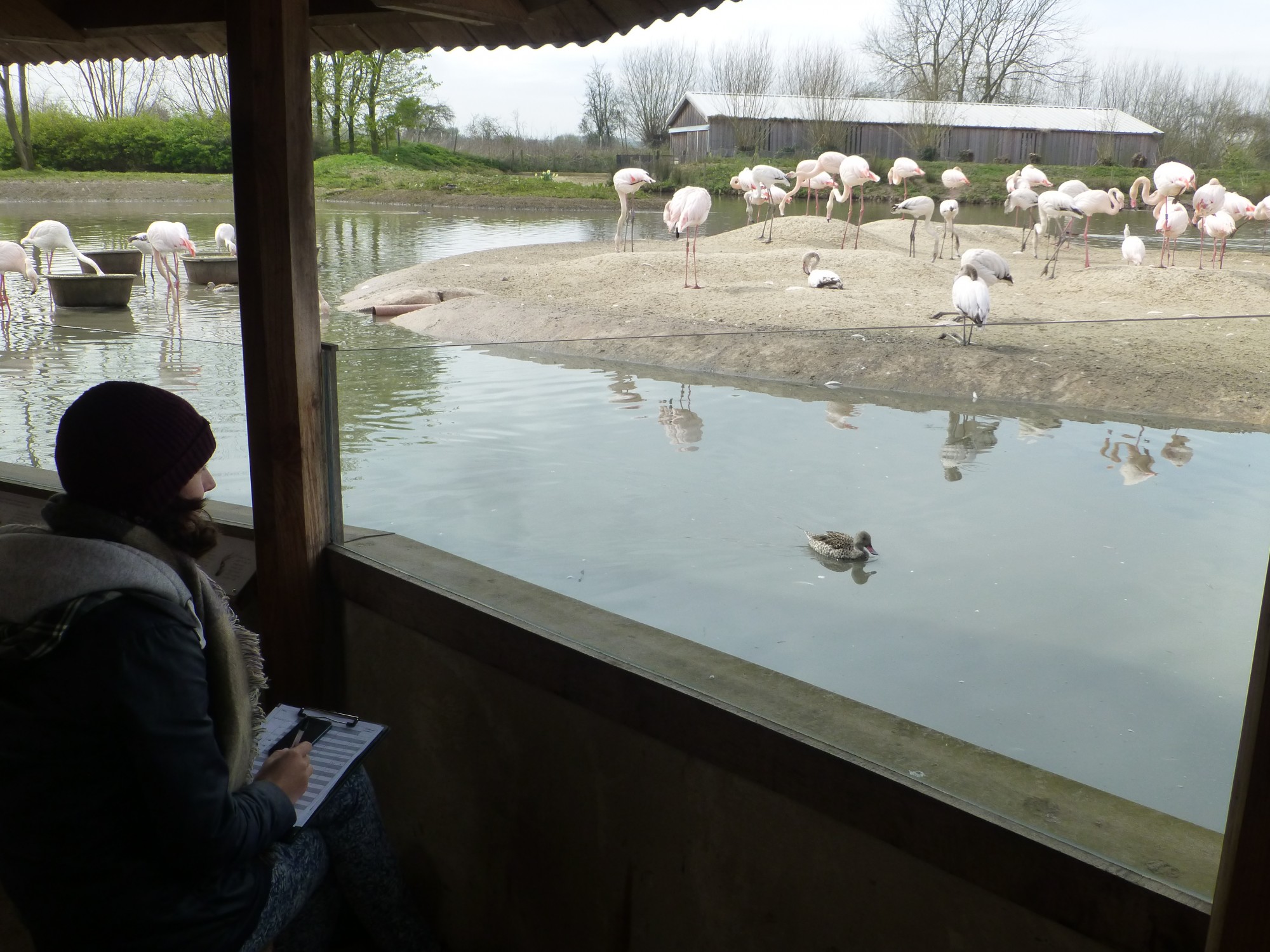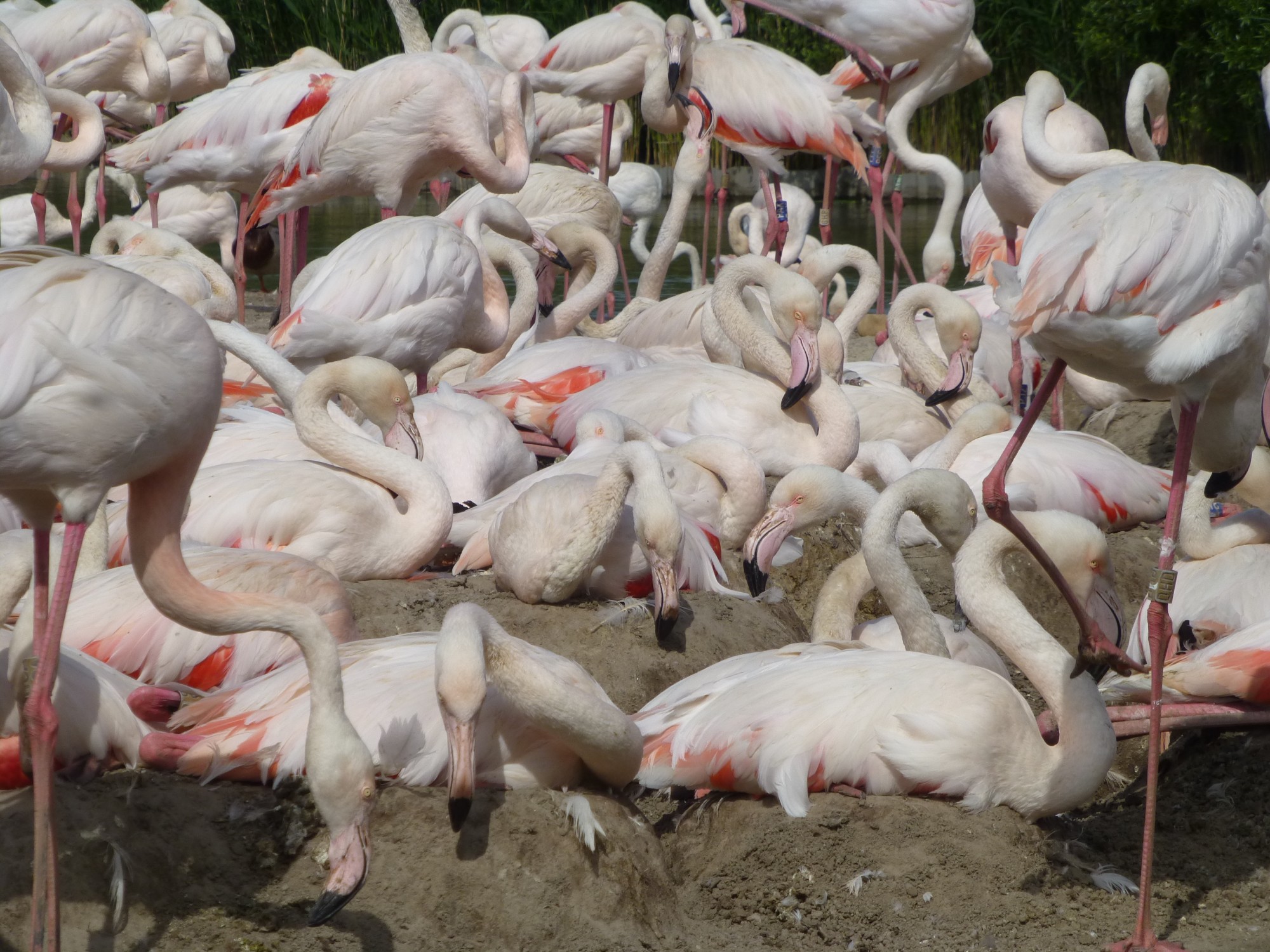Flamingo projects 2016 part 3.
It’s egg-hatching time in Flamingo Lagoon as the greater flamingos reach the end of their 30-day incubation period. Look out for grey-coloured chicks appearing from now! This will certainly be a treat for Imogen, the final MSc student to introduce you, as she is focussing on this flock for the next couple of months.
Imogen has a rather exciting project for not only is she observing the activity of the flamingos during the daytime but she is also measuring what they do overnight. Several night vision cameras have been stationed around Flamingo Lagoon and these are capturing images of the flock during the hours of darkness. Imogen’s research project hopes to build a complete picture of the day to day activity of the flamingo; what does it do and when, and where does it prefer to be during different times of the day.
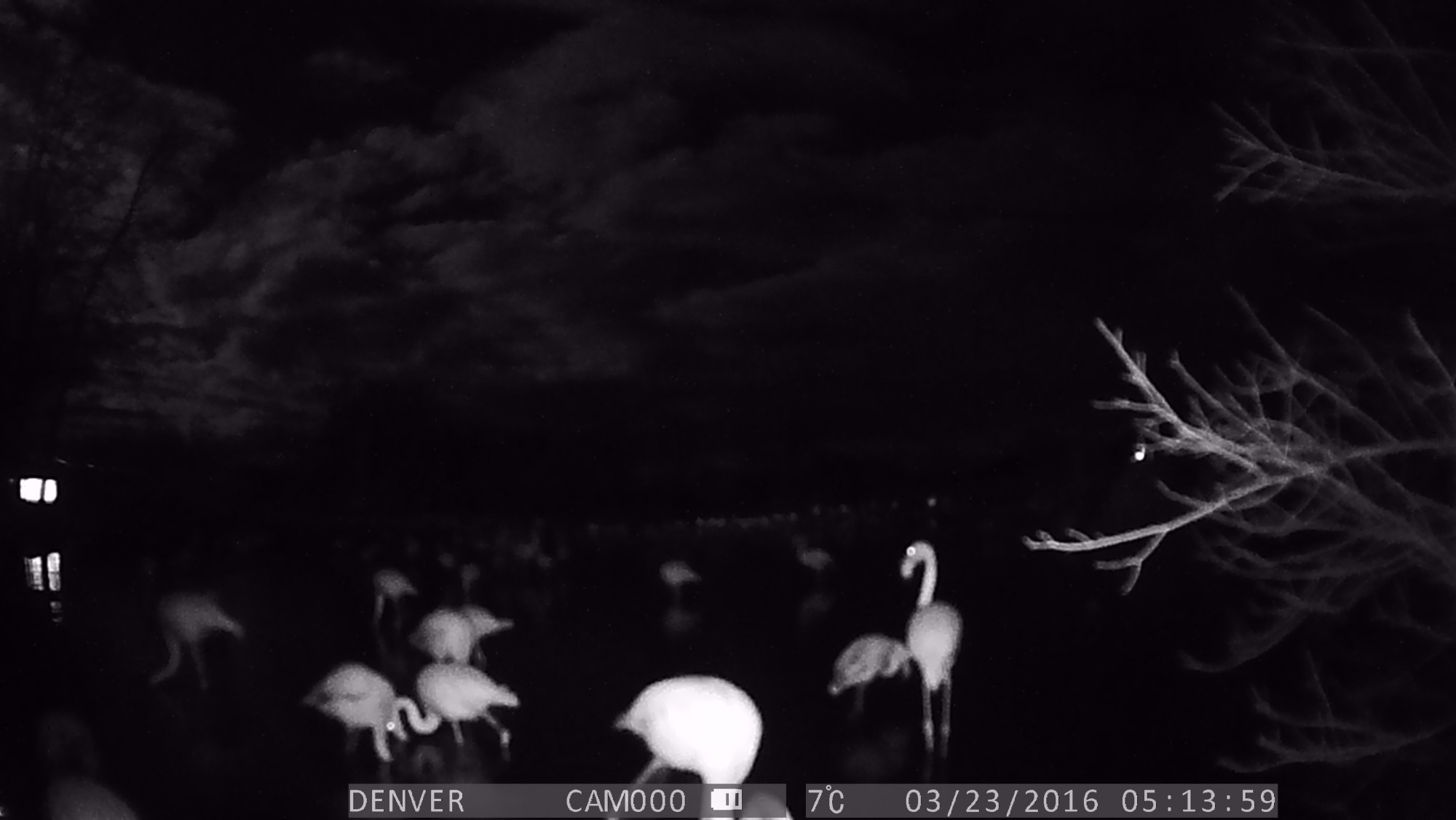 What does the WWT Slimbridge greater flamingo flock get up to at night?
What does the WWT Slimbridge greater flamingo flock get up to at night?
Yet again, the flocks of flamingos at WWT Slimbridge are shown to be valuable assets for scientific investigation, helping shed light on aspects of flamingo biology that would be tricky to implement on wild birds. The huge enclosure size provided by Flamingo Lagoon is a great replication of a wild habitat, and therefore we can be fairly confident that what the Slimbridge flamingos do is very similar to their wild cousins.
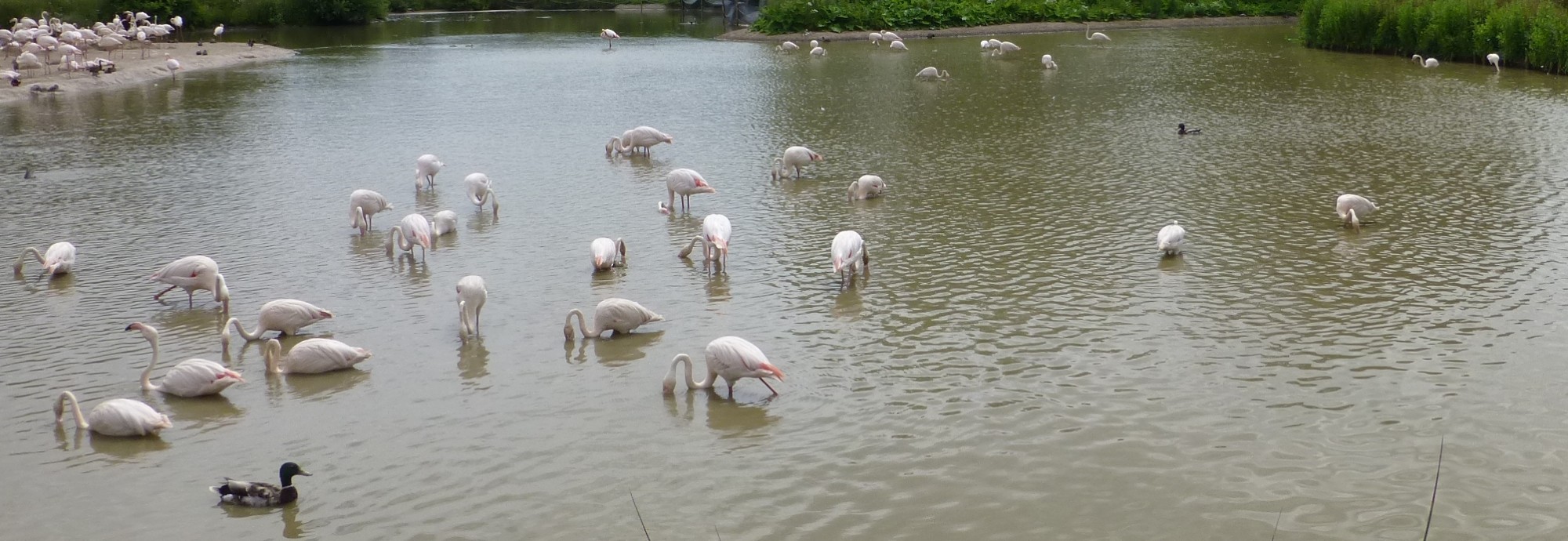 Massive! The Flamingo Lagoon exhibit provides the birds with lots of natural foraging opportunities.
Massive! The Flamingo Lagoon exhibit provides the birds with lots of natural foraging opportunities.
There are a handful of scientific papers that suggest flamingos have different behavioural patterns in the evening and overnight compared to the day time. You’re probably familiar with nocturnal animals, species that are most active during the hours of darkness, but there are also species who increase in activity in the early morning and in the evening; these species are termed crepuscular. Many ducks, geese and swans are crepuscular. And it might be that flamingos are too. Birds have excellent colour vision, and are designed to be daytime creatures. The vivid colours that many birds add to their plumage tell us this. Why go to the effort of looking so beautiful if they cannot be appreciated by other birds? Birds see different areas of the spectrum that we do- for example into ultraviolet, so they can make use of different light levels and better use of moonlight than we are able to as human beings.
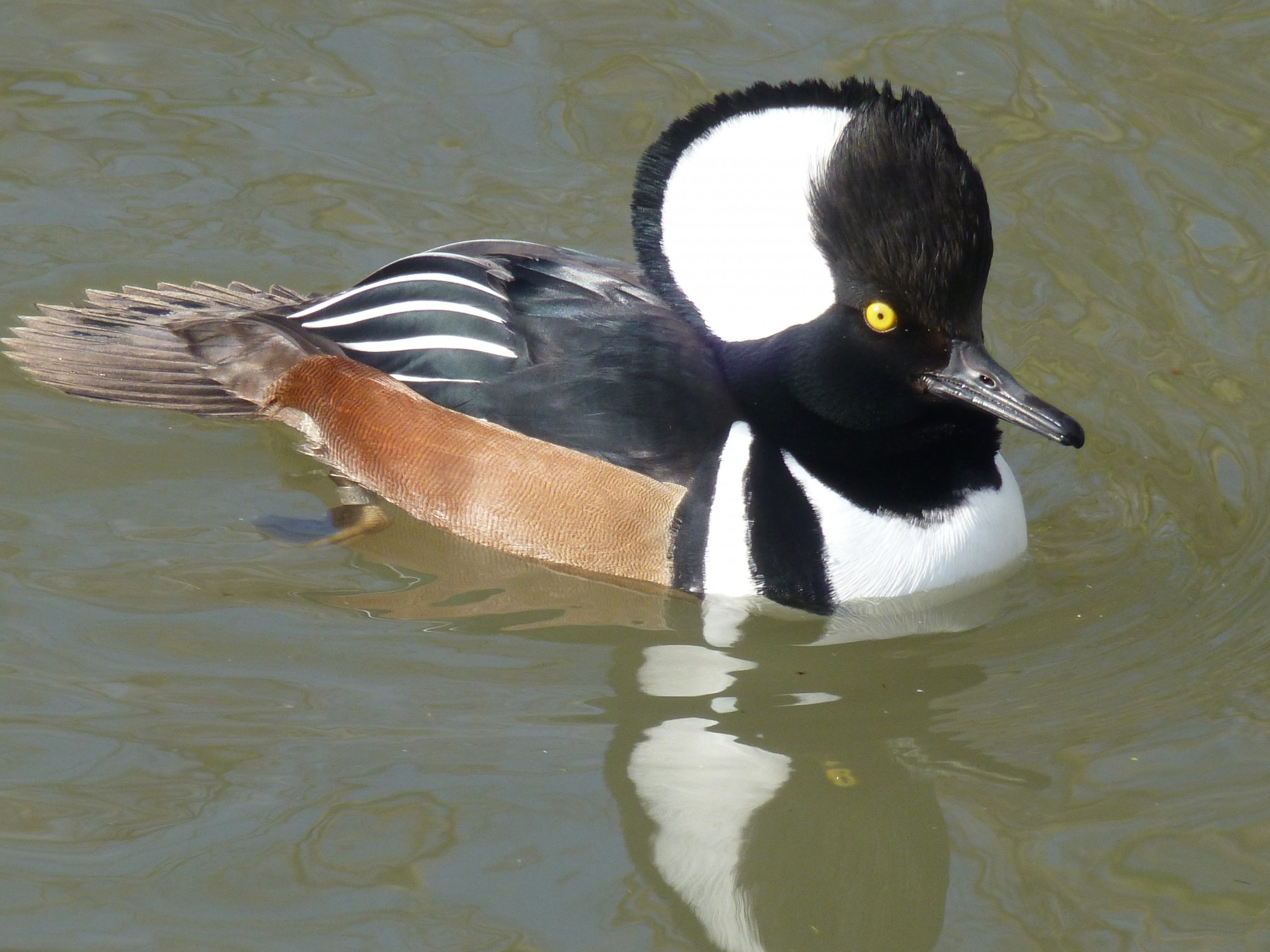 The striking appearance of this drake hooded merganser tells us that birds must see in colour. Otherwise it is wasted effort. Species of birds, like this duck and like the flamingos, that use colour to attract a mate will have very good colour vision to help detect the best quality partner.
The striking appearance of this drake hooded merganser tells us that birds must see in colour. Otherwise it is wasted effort. Species of birds, like this duck and like the flamingos, that use colour to attract a mate will have very good colour vision to help detect the best quality partner.
There are three cameras located around Flamingo Lagoon and I check on them regularly to change memory cards and batteries (so if you see someone clambering around in the undergrowth then that is me!). The cameras are recording during the day and at night, so a comparison of behaviour across a whole range of different times is possible.
It’s too early into Imogen’s project to get any concrete results yet but the photos and clips below, from the cameras themselves, show that different things happen in the flock at different times of the day. The other research that we have been doing on flamingo flocks at WWT Slimbridge, and in other organisations too, shows that activity increases in the afternoon and enclosure usage changes. So it would be nice to see a stronger effect of this overnight too. The space provided to the birds at Slimbridge certainly allows them the chance to change their behaviour as and when they want. So watch this space for more details towards the end of the year. In the meantime, enjoy some of the images that these cameras have generated so far, and a unique insight into the world of the flamingos that you want have seen before.
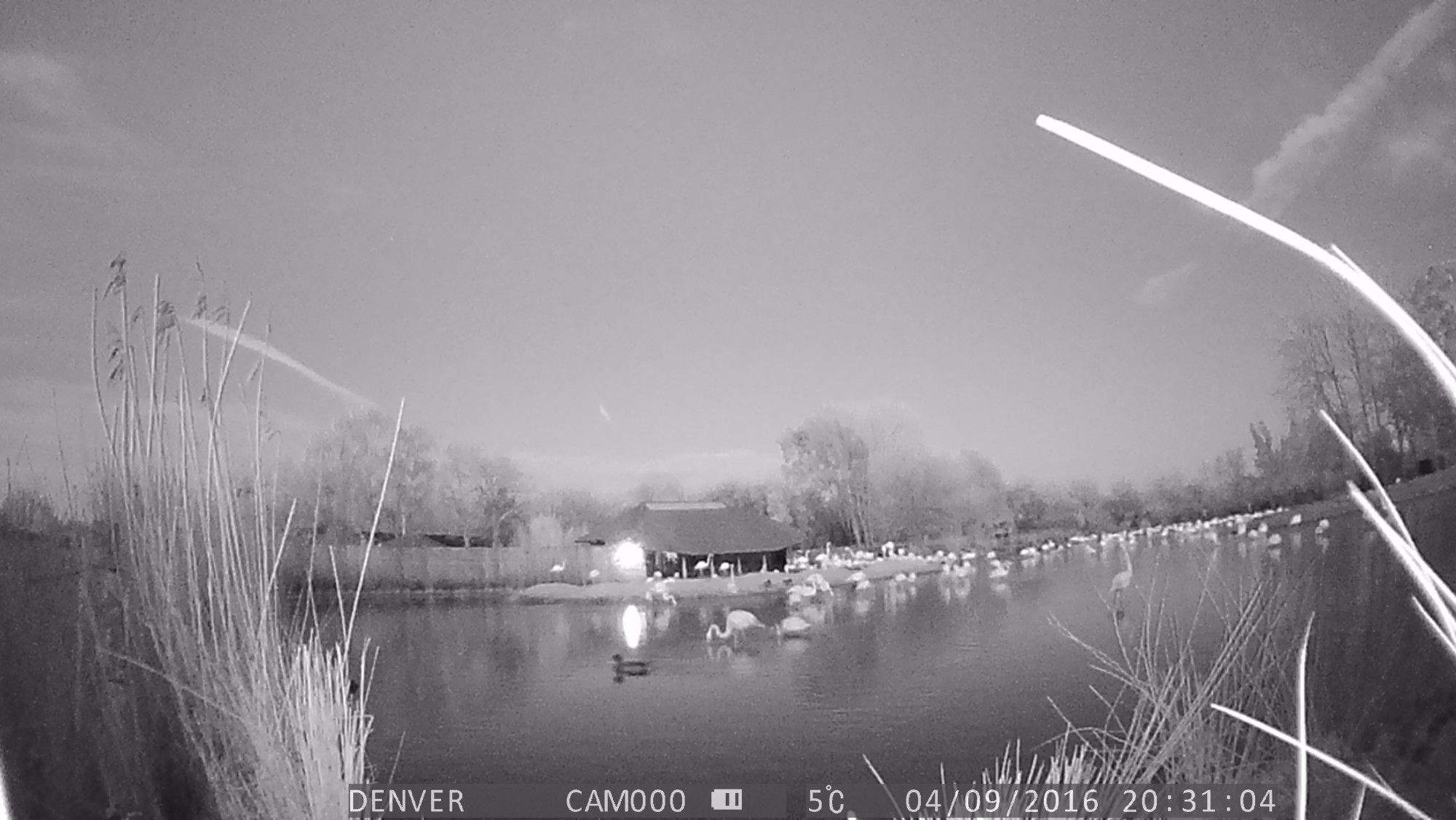 Flamingo Lagoon at 8:30pm. And the birds have moved from the island and into the surrounding water. Obviously in the nesting season this will alter their behaviour again, and more birds will stick to the island throughout the day and night.
Flamingo Lagoon at 8:30pm. And the birds have moved from the island and into the surrounding water. Obviously in the nesting season this will alter their behaviour again, and more birds will stick to the island throughout the day and night.
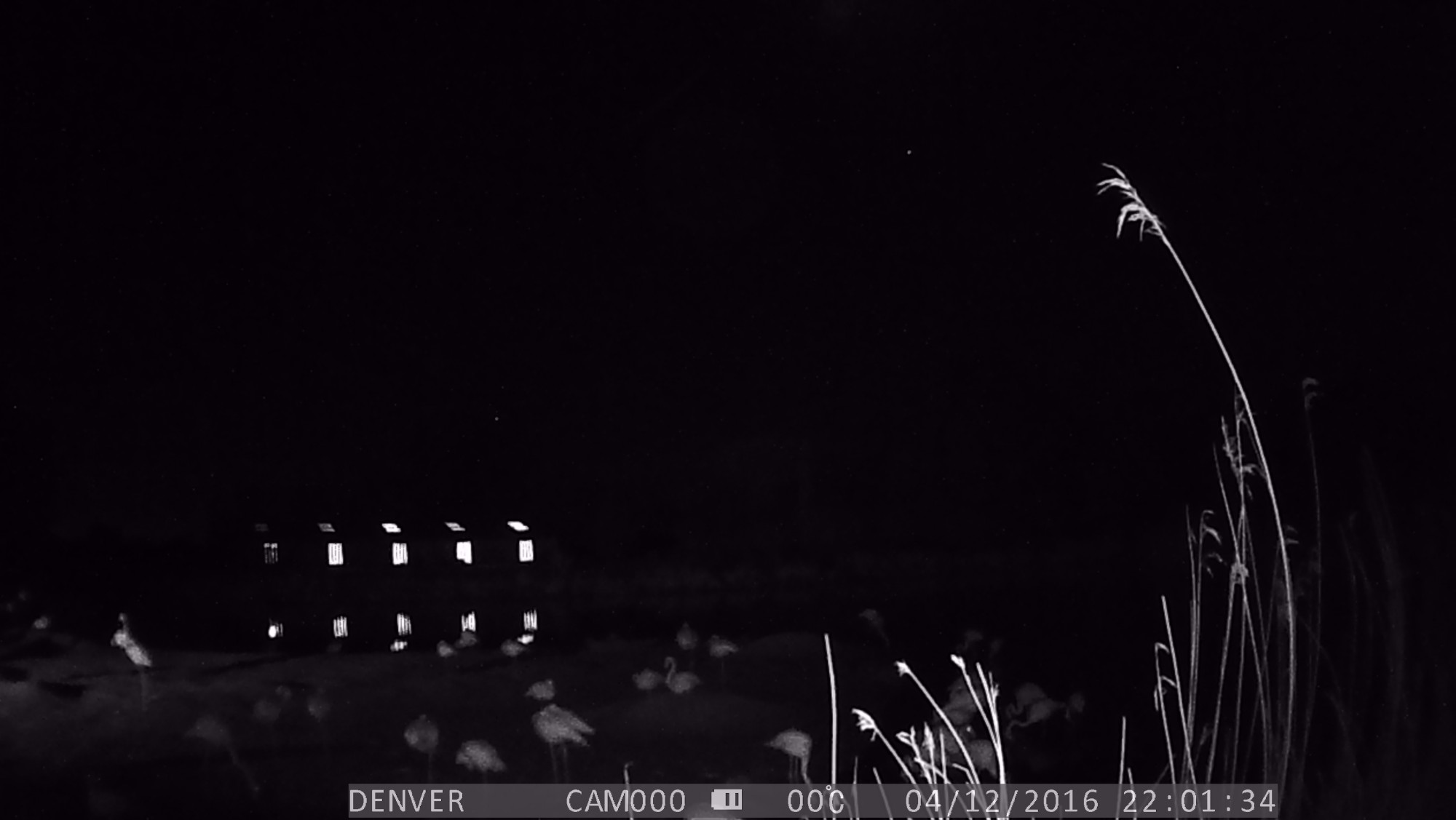 At 10pm. Fewer birds on the island, as more out of sight, to the left of the photo, foraging in the main pool.
At 10pm. Fewer birds on the island, as more out of sight, to the left of the photo, foraging in the main pool.
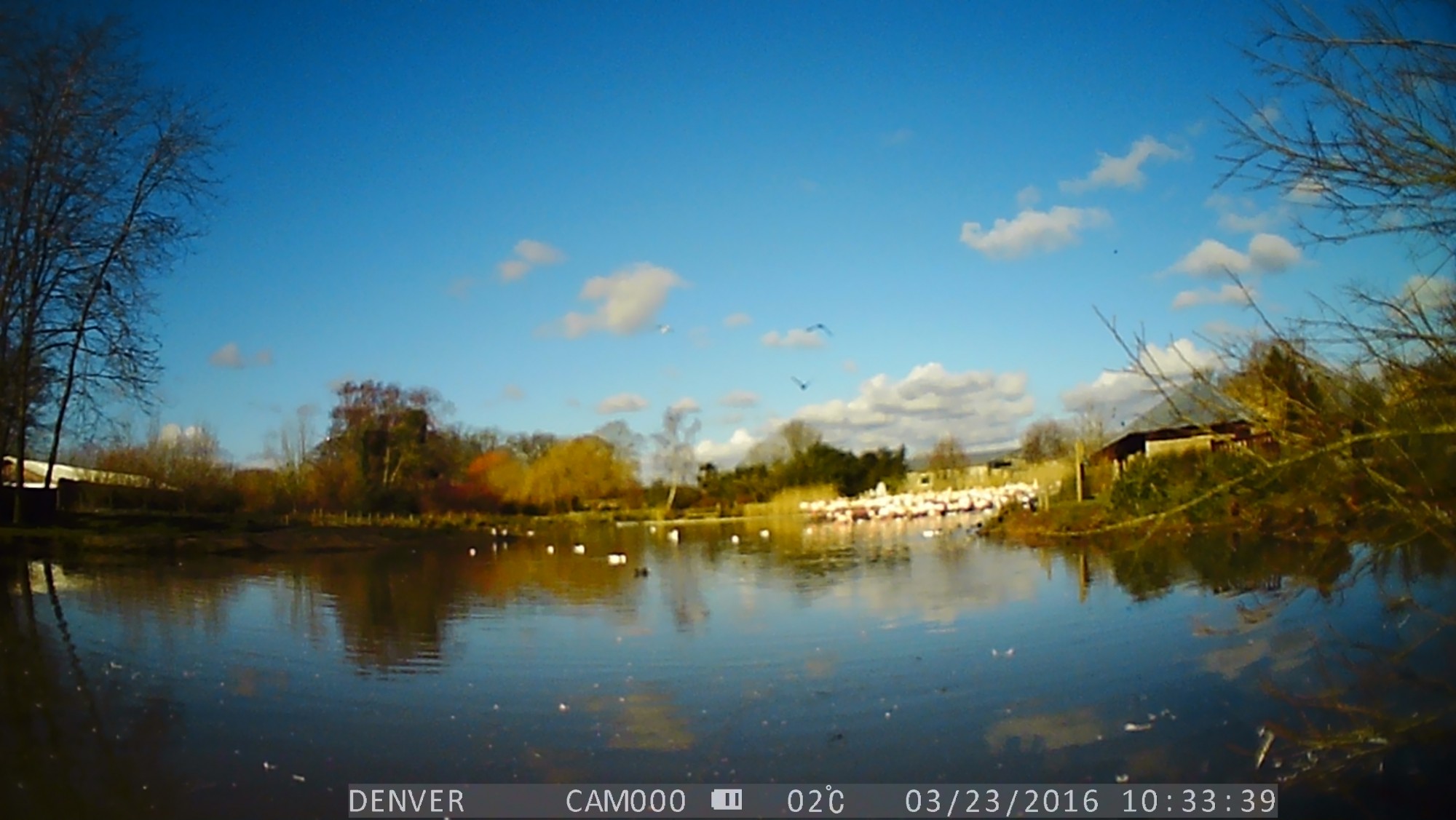 10:30am, the flamingos are in the usual place where visitors most often see them...
10:30am, the flamingos are in the usual place where visitors most often see them...
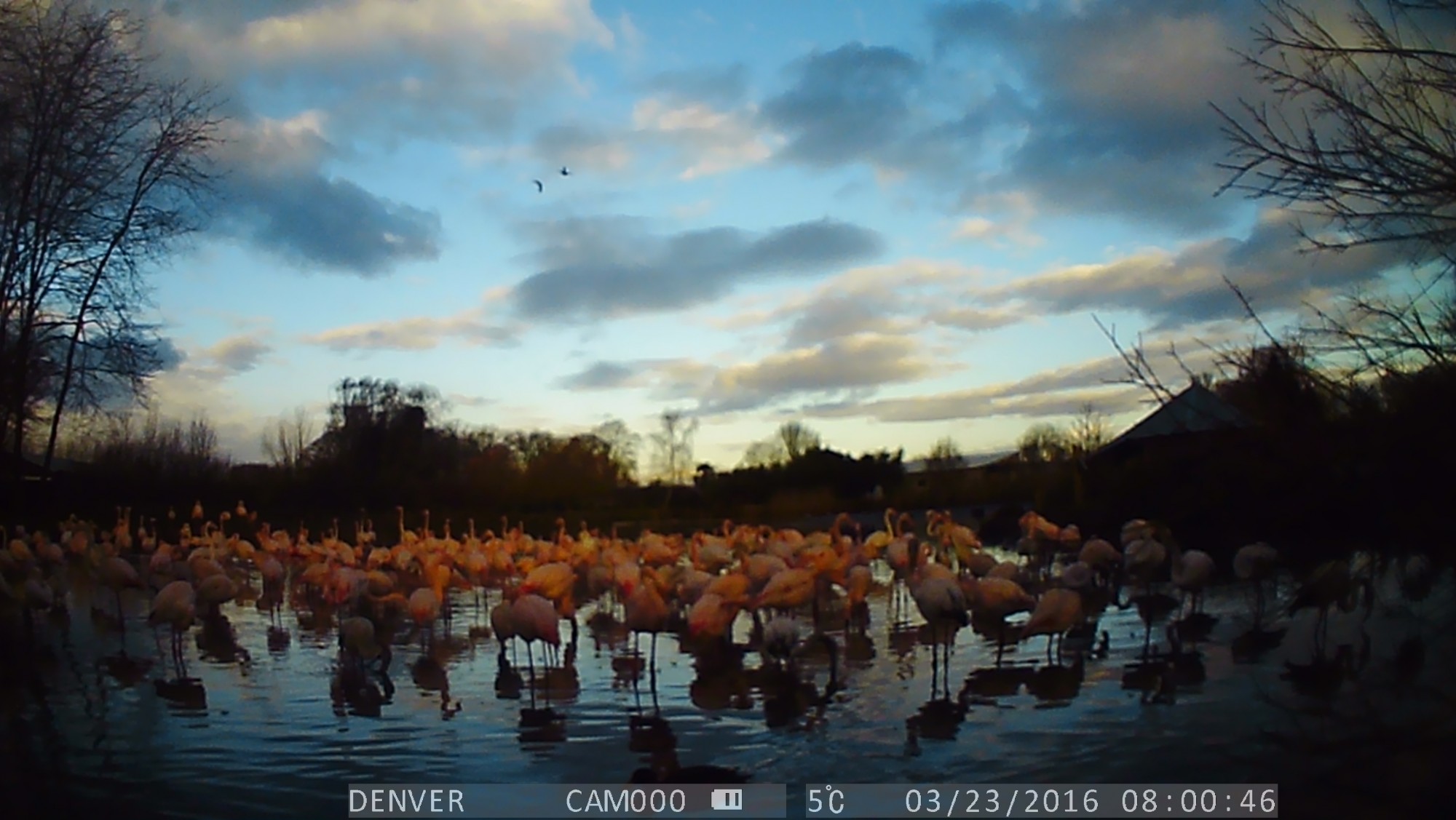 But only two hours previous, they had gathered en masse in the pool near to the Australian Pen!
But only two hours previous, they had gathered en masse in the pool near to the Australian Pen!
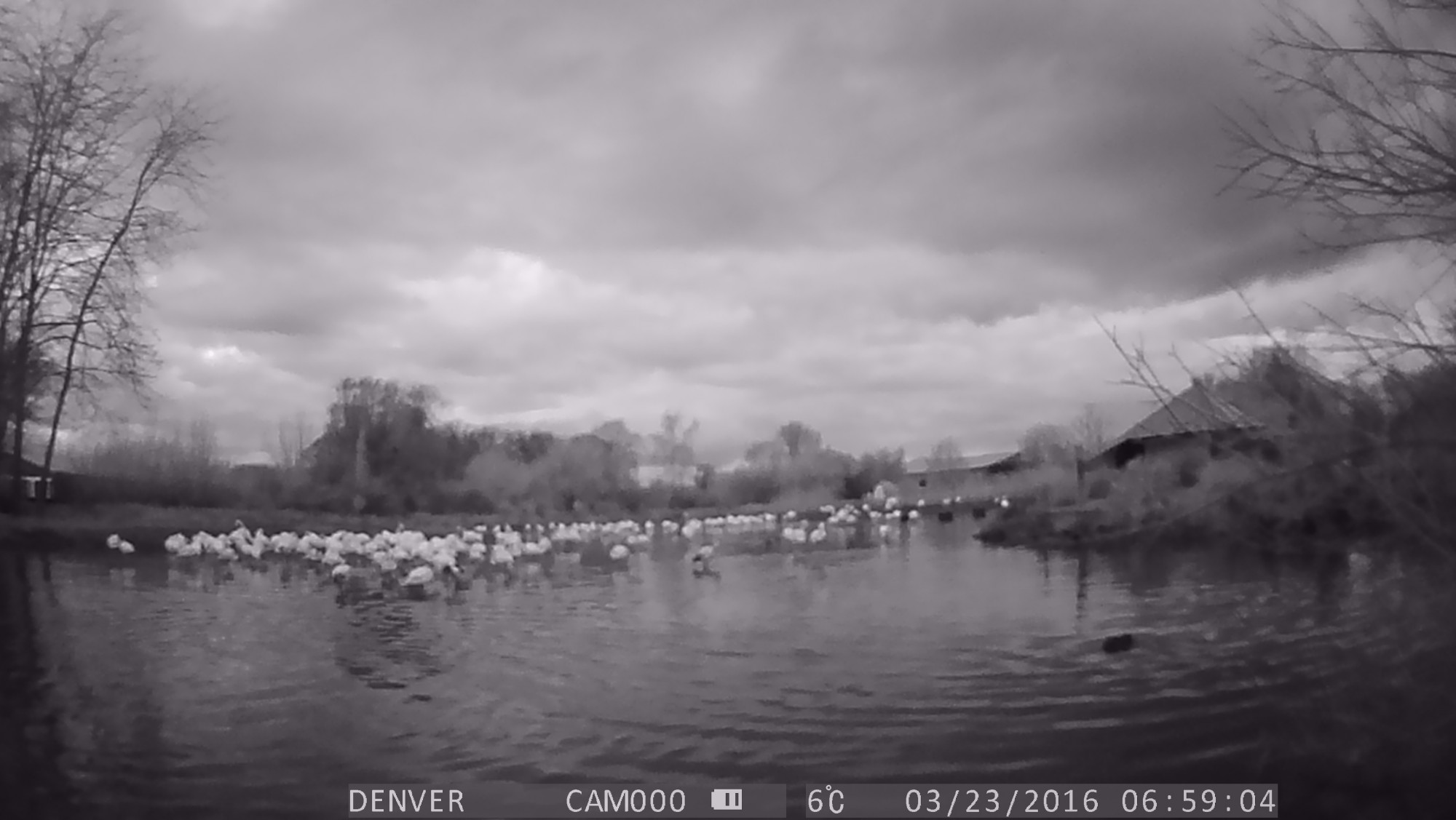 And even earlier, at 7am, the birds were doing whatever it is they like to do more in the centre of their pool.
And even earlier, at 7am, the birds were doing whatever it is they like to do more in the centre of their pool.
